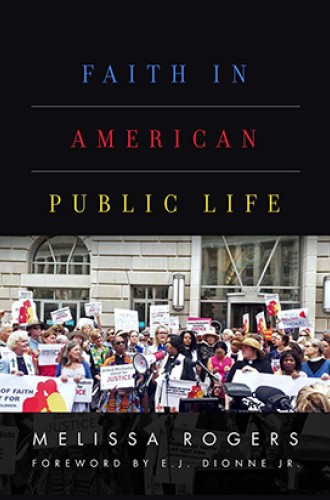Religious freedom in America
Melissa Rogers considers what a healthy role for religion in American public life might look like.
As 2019 drew to a close, Jewish communities in New York were reeling. They’d experienced at least one violent anti-Semitic attack on each of the nights of Hanukkah. In this cultural moment, with hostility against religious minorities on the rise and Christian supremacy often conflated with free speech, we very much need works like Faith in American Public Life. The safety of our neighbors—not to mention the stability of our democracy—relies on the kind of clear-eyed and reasonable account Melissa Rogers provides.
Rogers looks carefully at federal laws and policies relevant to the nonestablishment and free exercise of religion to show how our form of government protects religious expression. She opposes the use of fearmongering and dehumanizing language against people of minority religions, races, and ethnicities, pointing to the current president of the United States as one of the worst in deploying such tactics. But she contextualizes this critique in an academically robust survey of the appropriate modest bounds of free exercise and the important prohibitions on governmental advancement of religion that are the bedrock of our constitutional democracy.
For readers who may be intimidated by a 300-page study of free exercise and nonestablishment, Rogers offers a speed-reading approach to the book. Each chapter begins with a summary of law and policy and ends with a set of recommendations on how to defend religious freedom and promote a healthy role for religion in American public life. She gives permission in the introduction simply to read these summaries and recommendations.






